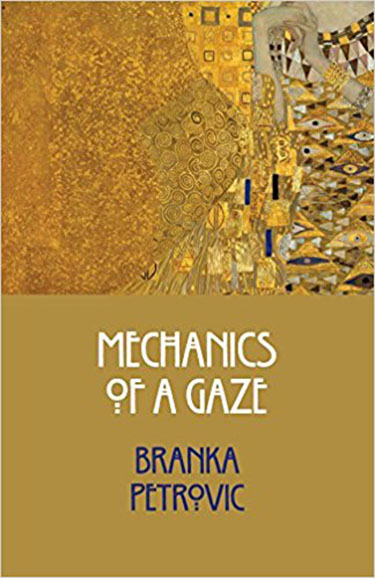
Mechanics of a Gaze
Branka Petrovic, 110 pgs, Mansfield Press, mansfieldpress.net, $17
In Mechanics of a Gaze, Branka Petrovic revisits the works of Gustav Klimt to expertly breakdown the problematic power dynamic between the artist and his subjects. Branka uses paintings, sketches, postcards, photographs, books and articles as the basis for the poems in this collection. Using these materials, Branka collects and assembles perspectives all related to Klimt and his craft.
The exploration into Klimt’s craft and his personal life raise some intriguing contrasts. In “Postcard No. 226,” based on Klimt’s personal postcards, we read “saw three poor donkeys grazing / on a large barren heath— / with feed-bags around their neck.” In this poem, Klimt recognizes the poor living conditions designed by humans for domesticated animals.
Yet a study of his paintings reveal that Klimt is incapable of giving the women he paints the empathy he shows for donkeys. In “Studies in Pencil for the Painting Leda,” the poem opens with “her mouth and cheeks concealed / by her left arm, as if half / an expression were more than enough; / her other half, euphoric thigh, / squealing sex.” By covering the woman’s expression, Klimt strips her of her humanity; turns her into a sex object. But where Klimt is interested in the sexualized female body, Branka draws attention to the experiences of the women on the receiving end of a gaze: “a woman awaits / her turn to be myth, draped / in plumage … tomorrow he might need her / to come in again, / replicate it all with legs crossed, / mouth shut, facing right.”
Branka encourages us to see past the nude form as Klimt saw her. Her critique of his perspective is sharp and profound. Mechanics of a Gaze demands that we collectively revisit our favourite artists and question the power dynamics at play. Who is being watched? Who is doing the watching? And what does it mean to be a viewer or a subject?
